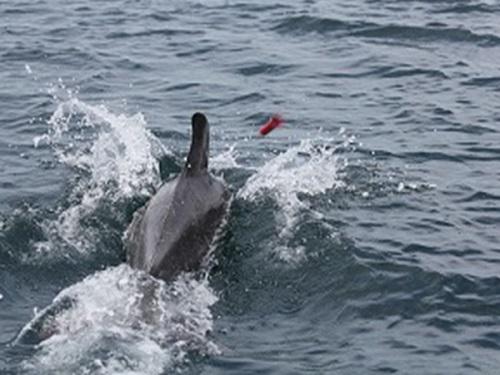Dalia Carolina Barragán Barrera
Other projects
13 May 2014
Studying Genetic Structure and Boat Disturbance on Individual Behaviour of an Isolated Coastal Population of Bottlenose Dolphins in Bocas Del Toro, Panama
8 Dec 2015
Studying the Foraging Ecology, Heavy Metals Bioaccumulation and the Health Status of the Bottlenose Dolphins of Bocas Del Toro, Panama
20 Nov 2017
Studying the Ecological Isolation and Physiological Response to Anthropogenic Stressors of a Vulnerable Bottlenose Dolphin Population in Bocas Del Toro, Panama
30 Oct 2019
Studying the Physiological Response of Bottlenose Dolphins to Anthropogenic Stressors Related to Boat Traffic in the Archipelago of Bocas Del Toro, Panama
The aim of this project is to construct a baseline for conservation and management of the bottlenose dolphin population in Bocas del Toro.

In the Archipelago of Bocas del Toro inhabits a resident population of bottlenose dolphins (Tursiops truncatus). This population is daily exposed to high levels of dolphin-watching tourism, which could potentially increase the probability of abandoning the area. Most dolphin-watching activities concentrate in an area known as Dolphin Bay. This is also the area where there seems to be a higher concentration of mother-calves pairs per group, highlighting the importance of the bay as a nursing ground. In the year 2011, five calves were found dead due to collisions with motor boats. For this reason, and the observations made in the field, we hypothesize that boaters are not following the recommended guidelines for approaching dolphin groups with calves and we want to investigate how nursing dolphins are reacting to different types of boat approaches. In addition, we believe it is important to work together with the local community to create awareness of dolphins’ and marine ecosystems conservation. To accomplish this we will be creating a series of talks and forums with the communities of Bocas del Toro to inform them about the project and about sustainable dolphin-watching practices.
Another important component of our research is studying the genetic structure of this dolphin population. The lack of genetic studies can be an impediment to determine adequate management planning at the local level. It is necessary to determinate which “ecotypes” are found in the Caribbean to define reasonable management units for this area. The coastal bottlenose dolphin from Bocas del Toro Archipelago exemplifies this situation, where factors such as high site-fidelity (probably leading to low gene flow with neighboring populations) can make this population vulnerable to human activities as boat traffic. Recently, molecular studies have shown two forms (not ecotypes) to describe bottlenose dolphin populations: the “inshore ecotype” and the “worldwide distributed form”. So, although the "inshore ecotype” (coastal populations) shows site fidelity, interactions between these individuals and transients (who do not show a pattern of site residence) may produce a genetic exchange that may lead to confusion when determining conservation units for T. truncatus. The goal of this study is to combine the study of the genetic structure of the population of Bocas del Toro together with the effects of dolphin-watching to determinate units for management and suggest conservation strategies.